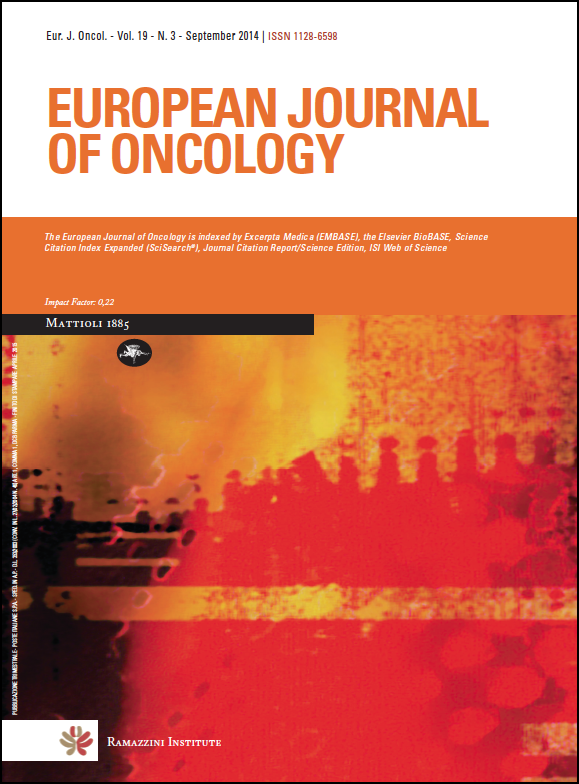Intraoperative radiotherapy during breast cancer surgery: acute and chronic cardiac safety tested by an ultra-sensitive troponin and N-terminal Pro-B-type natriuretic peptide
Keywords:
intraoperative radiotherapy, breast cancer, troponin I, N-terminal ProB-type natriuretic peptide, breast conservative surgeryAbstract
Aim: Intraoperative radiotherapy (IORT) is now an acceptable option for low risk early stage breast cancers, allowing patients not to undergo a full course of external radiotherapy. It is not clear, however, whether IORT, providing radiations very close to the chest wall, may produce heart damage. In this study we tried to evaluate if acute or chronic heart damage in early stage breast cancer patients treated with breast conservative surgery (BCS) and IORT, can be assessed by ultra-sensitive cardiac Troponine I (TnI) levels or N-terminal proB-type natriuretic peptide (NT-proBNP), respectively. Materials and methods: We enrolled 43 patients who received IORT for breast cancer, as part of a TARGIT-A trial. Twenty-two patients had left and 21 right breast cancer. TnI levels were measured immediately before surgery, and six hours after the end of IORT; both TnI and NT-proBNP levels were measured after 12 months. For the patients with left breast cancer, a little tungsten sheet was placed under the major pectoralis muscle, on the chest projection of the X-ray source, in order to protect the heart. Results: None of the patients showed altered serum levels of TnI before surgery, or after IORT procedure and NT-proBNP during follow-up. No difference in TnI and NTproBNP values was noticed between right-sided and left-sided breast cancers treated with BCS and IORT. Conclusions: IORT for early stage breast cancer treatment does not increase TnI and NT-proBNP levels, suggesting that the procedure does not determine acute or chronic heart damage.Downloads
Published
Issue
Section
License
OPEN ACCESS
All the articles of the European Journal of Oncology and Environmental Health are published with open access under the CC-BY Creative Commons attribution license (the current version is CC-BY, version 4.0 http://creativecommons.org/licenses/by/4.0/). This means that the author(s) retain copyright, but the content is free to download, distribute and adapt for commercial or non-commercial purposes, given appropriate attribution to the original article.
The articles in the previous edition of the Journal (European Journal of Oncology) are made available online with open access under the CC-BY Creative Commons attribution license (the current version is CC-BY, version 4.0 http://creativecommons.org/licenses/by/4.0/).
Upon submission, author(s) grant the Journal the license to publish their original unpublished work within one year, and the non exclusive right to display, store, copy and reuse the content. The CC-BY Creative Commons attribution license enables anyone to use the publication freely, given appropriate attribution to the author(s) and citing the Journal as the original publisher. The CC-BY Creative Commons attribution license does not apply to third-party materials that display a copyright notice to prohibit copying. Unless the third-party content is also subject to a CC-BY Creative Commons attribution license, or an equally permissive license, the author(s) must comply with any third-party copyright notices.

